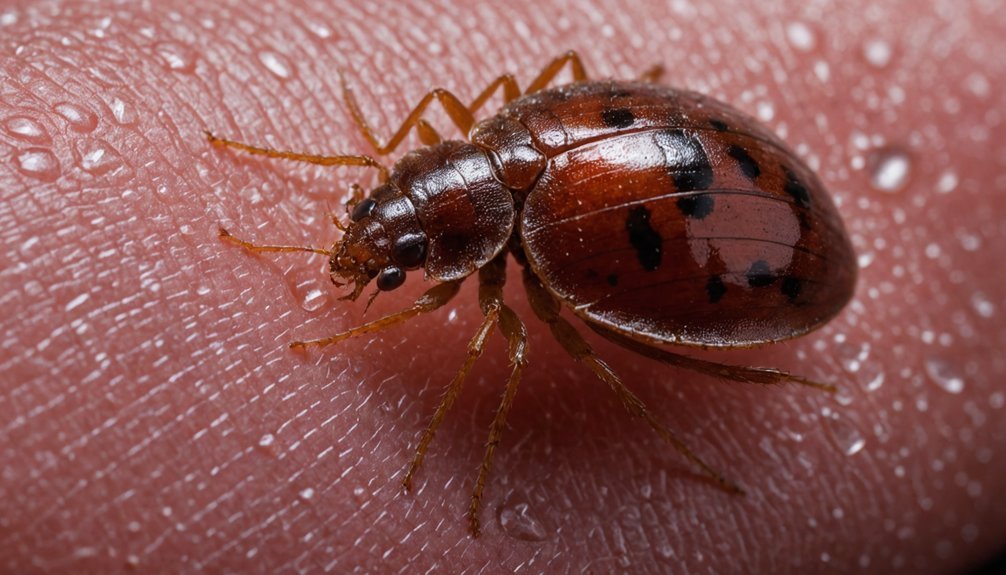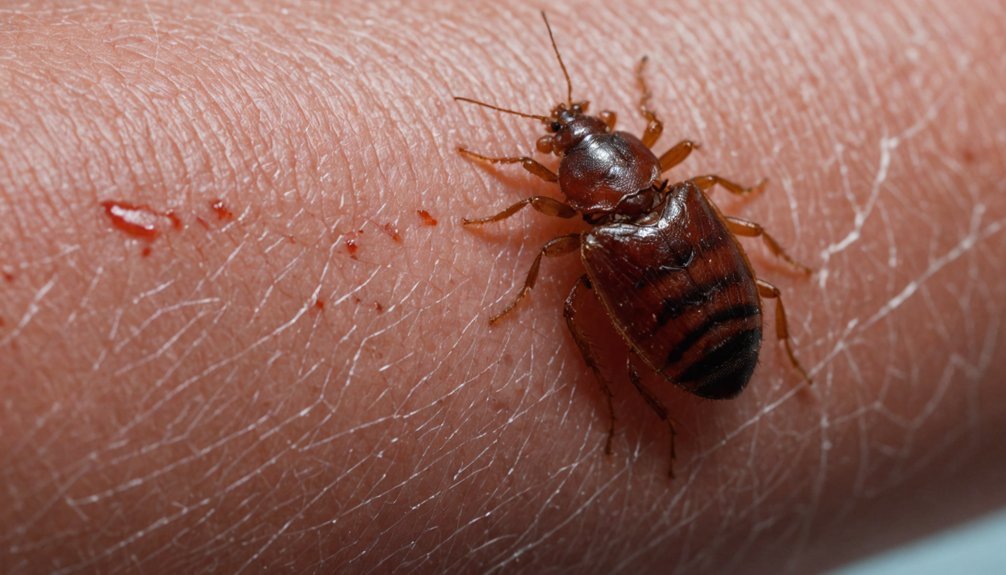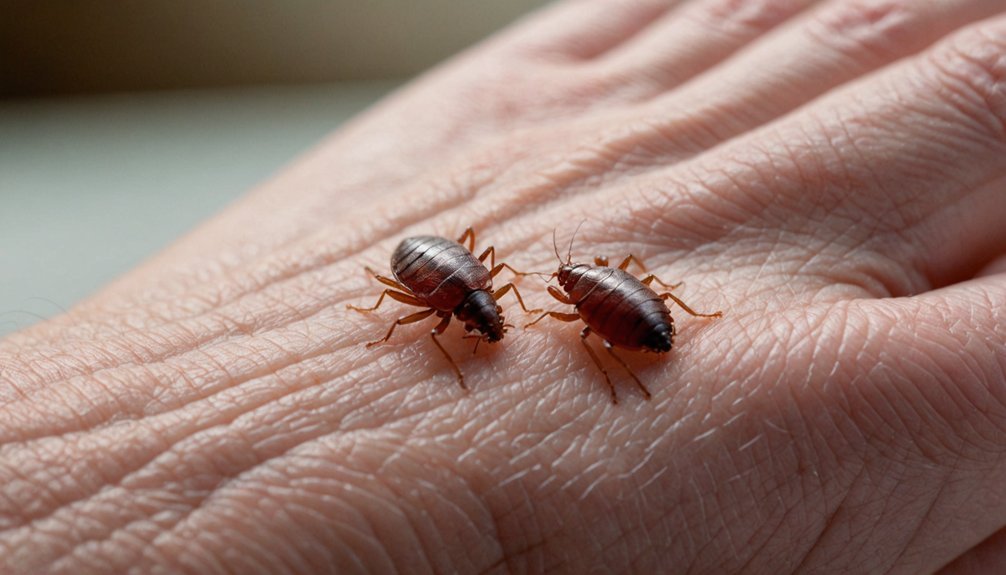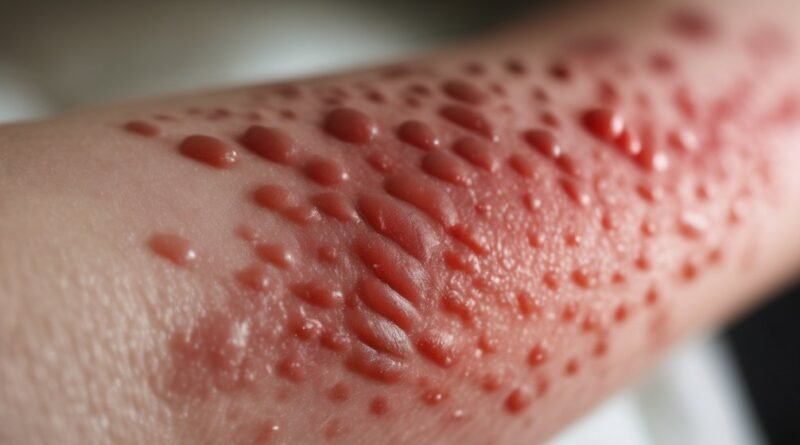How Long Do Bed Bug Bites Last? Healing Time Explained
If you’ve woken up with mysterious, itchy red bumps, you’re probably wondering how long these unwelcome bed bug bites will stick around. While most bites heal within 1-2 weeks, your individual healing time can vary considerably based on several factors. From the initial appearance to the final fade, understanding the typical timeline and warning signs will help you manage these pesky bites effectively and know when it’s time to seek medical help.
Key Takeaways
- Bed bug bites typically heal completely within 1-2 weeks if left untreated and not scratched.
- Initial bite marks may take up to 14 days to become visible on your skin.
- Bites progress from small red bumps to itchy welts within a few days, then gradually fade during recovery.
- Individual reactions vary, with some people showing no symptoms while others experience intense itching and swelling.
- Scratching bites, having multiple bite clusters, or ongoing infestations can extend healing time significantly.
Typical Duration and Healing Stages of Bed Bug Bites

While bed bug bites typically heal within one to two weeks, your individual healing time can vary based on several factors.
The bites may not appear immediately, taking up to 14 days to become visible after you’ve been bitten.
You’ll notice the healing process occurs in distinct stages, starting with small red bumps that mightn’t itch at first due to the bug’s anesthetic saliva.
Within a few days, you’ll experience increased itching and redness, possibly with swelling.
Some bites may form clusters or lines on your skin.
If you’re allergic, you might develop larger welts or blisters.
The inflammation will gradually subside as the bites enter the recovery stage, where itching decreases and lesions fade – unless scratching leads to infection.
Using over-the-counter antihistamines can help reduce itching and discomfort during the healing process.
Key Symptoms and What to Watch For

Understanding bed bug bite symptoms helps you identify and monitor the healing process effectively.
You’ll typically notice small, red welts appearing in clusters of three to five or in zigzag lines on exposed areas like your face, neck, arms, and legs. These bites may initially be painless but often develop into itchy, burning sensations within hours or days. Bite marks can take up to 14 days to appear.
Watch for signs that require medical attention, including extensive swelling, blistering, or spreading redness beyond the bite area. If you experience difficulty breathing, fever, or irregular heartbeat, seek emergency care immediately.
While most bites heal naturally, excessive scratching can lead to secondary infections. You might also notice psychological effects like anxiety or sleep problems, which shouldn’t be ignored during the healing process.
Factors That Speed Up or Delay Recovery

Several key factors influence how quickly your bed bug bites heal, from your immune system’s response to environmental conditions.
Your individual sensitivity to bed bug saliva plays a vital role – if you’re hypersensitive, you’ll likely experience more intense initial reactions but potentially faster healing.
While hypersensitivity to bed bug saliva causes stronger reactions, it may actually lead to quicker healing through heightened immune response.
However, scratching can considerably delay recovery by damaging skin and risking infection.
You’ll heal faster if you keep the affected areas clean and use anti-itch medications to prevent scratching.
Your overall health matters too – conditions like diabetes or compromised immunity can slow healing.
If you’re dealing with multiple or clustered bites, expect longer recovery times.
Having an active infestation will also delay healing since you’re continuously getting new bites, so eliminating the bed bugs is essential for complete recovery.
Using cooling lotions and antihistamine creams can significantly reduce healing time and provide relief from discomfort.
Essential Treatment Methods for Faster Healing
To effectively treat bed bug bites and accelerate healing, you’ll need a multi-faceted approach combining medication and proper wound care.
Apply topical corticosteroids like hydrocortisone to reduce inflammation and itching, while taking oral antihistamines such as cetirizine or loratadine to control histamine reactions.
Keep the affected areas clean and avoid scratching to prevent secondary infections. You can use cold compresses and calamine lotion for temporary relief. Since bed bug bites appear in a distinctive zigzag pattern, checking nearby skin areas can help identify additional bites requiring treatment.
If you notice signs of infection like swelling, warmth, or pus, consult your healthcare provider, as you may need antibiotics.
For severe reactions, your doctor might prescribe stronger treatments, including systemic corticosteroids, but these are typically reserved for extreme cases due to potential side effects.
Warning Signs That Require Medical Attention
While most bed bug bites heal naturally within 1-2 weeks, certain warning signs demand immediate medical attention.
If you experience difficulty breathing, swelling of the throat or tongue, rapid heartbeat, or dizziness, seek emergency care as these may indicate a severe allergic reaction.
Watch for signs of infection at bite sites, including expanding redness, warmth, pus, or increasing pain.
The bites typically appear in a zigzag pattern or line on exposed areas of skin.
If you develop fever, flu-like symptoms, or blisters with yellowish fluid, you’ll need antibiotics.
Children, elderly, and those with weakened immune systems should be monitored closely, as they’re more vulnerable to complications.
If your bites result in large swelling over 4 inches in diameter or you notice wheezing, chest tightness, or trouble swallowing, don’t wait – get medical help immediately.
These symptoms could signal a dangerous anaphylactic reaction.
Conclusion
You’ll find that most bed bug bites heal within 1-2 weeks if you avoid scratching and keep the area clean. While you can’t rush the natural healing process, using anti-itch creams and taking antihistamines will ease your discomfort. Remember to contact your doctor if you notice severe swelling, blistering, or signs of infection. The key is staying patient while monitoring your symptoms.

